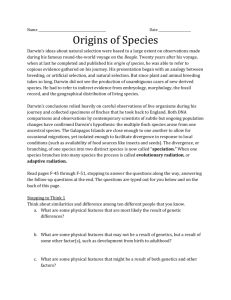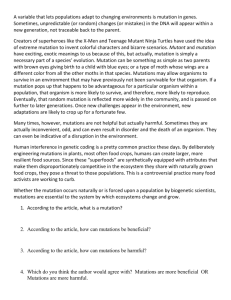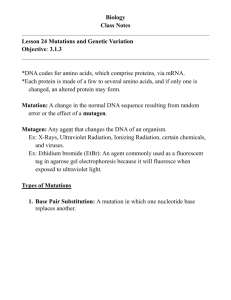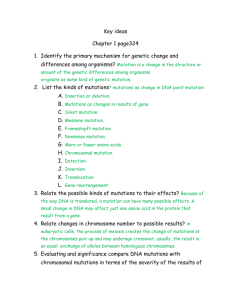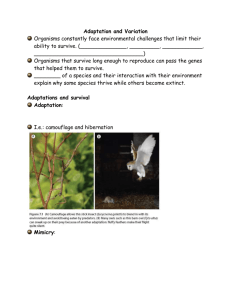Unit 3 topic 4 Adaptation and natural selection
advertisement
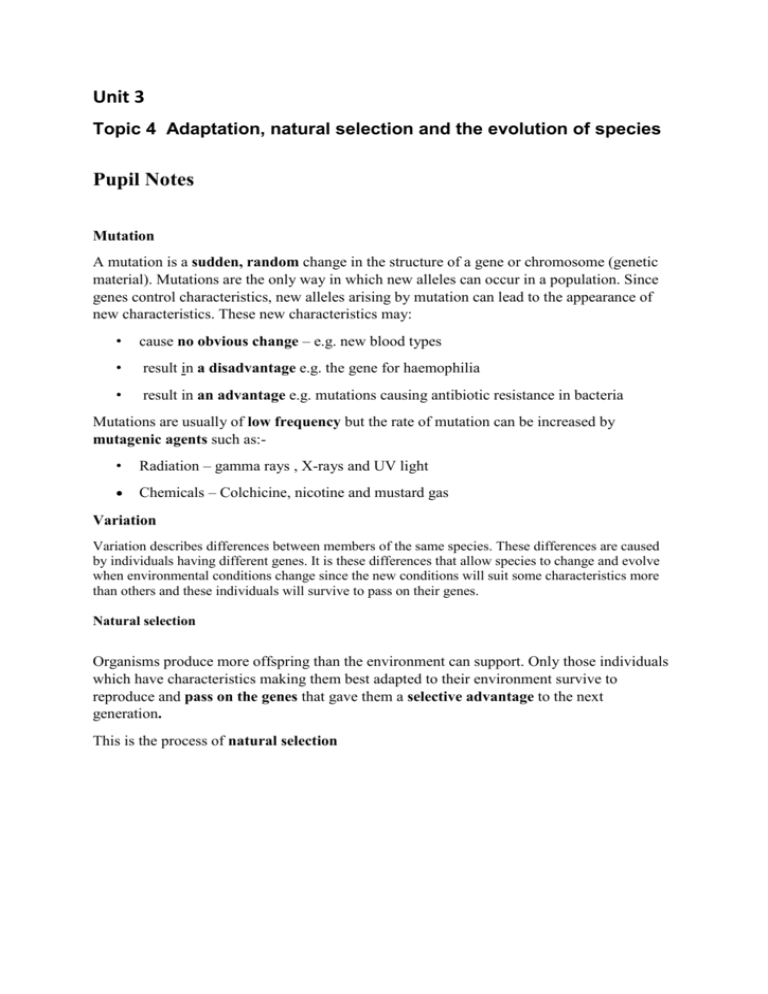
Unit 3 Topic 4 Adaptation, natural selection and the evolution of species Pupil Notes Mutation A mutation is a sudden, random change in the structure of a gene or chromosome (genetic material). Mutations are the only way in which new alleles can occur in a population. Since genes control characteristics, new alleles arising by mutation can lead to the appearance of new characteristics. These new characteristics may: • cause no obvious change – e.g. new blood types • result in a disadvantage e.g. the gene for haemophilia • result in an advantage e.g. mutations causing antibiotic resistance in bacteria Mutations are usually of low frequency but the rate of mutation can be increased by mutagenic agents such as:• Radiation – gamma rays , X-rays and UV light Chemicals – Colchicine, nicotine and mustard gas Variation Variation describes differences between members of the same species. These differences are caused by individuals having different genes. It is these differences that allow species to change and evolve when environmental conditions change since the new conditions will suit some characteristics more than others and these individuals will survive to pass on their genes. Natural selection Organisms produce more offspring than the environment can support. Only those individuals which have characteristics making them best adapted to their environment survive to reproduce and pass on the genes that gave them a selective advantage to the next generation. This is the process of natural selection Mutations and Natural Selection - Peppered moth: An example of natural selection There are two forms of the moth, a speckled form and a dark form. The original speckled form of the moth is well adapted to its environment since its speckled colour gives it camouflage when resting on tree trunks covered in lichens preventing it being seen by predatory birds – the speckled form has a selective advantage A random mutation appeared giving a few individuals a new allele which leads to the colour being dark The new mutation does not normally give a selective advantage as individuals who have a dark coat are easily spotted by predator birds and so do not survive in large numbers. A change in the environment caused by factories giving out soot turn the trees black. Suddenly any individuals carrying the dark mutation have a selective advantage as the dark colour helps them camouflage themselves against the predator birds so individuals carrying the mutation survive, reproduce and pass the new feature to their offspring. Light and dark moth resting on a sootcovered tree trunk in a polluted area Light and dark moth resting on a lichencovered tree trunk in an unpolluted area Speciation Speciation means the development of new species of plants or animals. New species can only be formed from existing species. This is how a new species forms 1. Isolation The first step in forming a new species is when a population gets separated from the rest of the species, e.g. if the isolated population is on an island, the sea acts as a barrier preventing the two groups from mixing and breeding with each other so they no longer share genes. 2. Mutations and natural selection Different mutations occur in the two groups so that their genes and characteristics become different. Since the two groups don’t have the same environment, the selection pressures on each of them are different – these means that different characteristics will be favoured to survive and be passed on to offspring. After a long time the two groups have changed so much that they have become different species This process has led to the development of many species on the Galapagos Islands that are found nowhere else. For example there are many different types of finch on the islands that evolved from ancestor finches that were cut off by the sea from other finches on the mainland. The beaks of these birds have become adapted to eat different foods: Ancestral finch – eats small seeds Three types of Galapagos finch Galapagos finch – beak adapted to eat small insects Galapagos finch – beak adapted to eat cactus flowers, fruit and nectar Galapagos finch – beak adapted to eat large seeds
